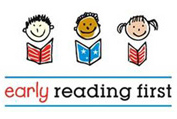Below are six components of the Scaffolding Early Learning program with specific purposes to scaffold children’s literacy development.
COMPONENT |
PURPOSES INCLUDE |
FEATURES |
MORNING MESSAGE |
To help children understand the following:
- Print carries a message (we write what we say).
- Picture is related to a message.
- Conventions of print (e.g., directionality, return sweep).
- We can make a plan and follow through, instead of acting impulsively.
- Concepts about print:
- One-to-one correspondence
-each line represents a spoken word
-each spoken word represents a written word
- Sound-symbol correspondence
- Letter sounds
- Letter names
|
- Implemented daily.
- Lesson lasts a few minutes (5 min.)
- Whole group (when all children are present).
- On white board.
- Teacher follows steps in a specific sequence.
- Instructional focus changes over the course of the year as children develop literacy skills.
|
QUESTION OF
THE WEEK |
- To develop name recognition, self regulation, sound-symbol correspondence and print awareness, child participation in keeping attendance.
- To develop familiarity with answering questions. It is possible to encourage children to think ahead and plan (self-regulation) whether they want to answer yes or no to the question.
- To encourage discussions of questions at home. Children can talk to their families at home about the questions as they plan their choices.
TIP: On Monday, an adult will need to read the question. A visual/nonlinguistic cue can be used to help children remember on subsequent days |
- Implemented daily.
- Chart or stand should be located near entrance.
- Children use this routine to sign-in their attendance each day.
- The Question: At the beginning of the year, the question is concrete and verifiable. As the year progresses, the question focuses on early literacy, such as developing phonemic awareness.
|
MYSTERY
WORD |
- To build on familiar routine of Question of the Week to focus on early literacy activities, such as developing phonemic awareness. Activities can include selecting the beginning sound to match the picture clue, select the word that rhymes with the picture clue. Mystery word can be talked about throughout the day.
|
- Implemented daily.
- Short, individual routine that can be discussed among children.
- Chart or stand should be located near entrance.
- Children may match beginning sounds or choose rhyming words.
|
GRAPHIC PRACTICE |
- To practice making on paper the specific kinds of marks and shapes that are necessary for writing the letters of the alphabet.
- To provide practice in a pretend scenario—a little “story” that provides a meaningful context for the practice.
- To gain more control over the writing instrument.
- To see how marks can be different and can be combined with each other to make different shapes (e.g., dots, lines, circles).
- To help children develop self-regulation (stop-start element).
|
- Implemented daily.
- Small group activity.
- Teacher leads activity accompanied by music.
- Each child has a small white board, dry erase marker, and sock eraser.
- Provides calming effect so it is helpful to schedule after outdoor play or gross motor skills activity.
|
BUDDY
READING |
- To provide oral language practice and develop concepts of print.
- To build reading confidence and practical book handling skills.
- To provide children with a designated time to “read” without interruption and to practice listening.
- To create a paired structure that allows equal participation for reading together.
|
|
LINEAR CALENDAR |
- To teach the concept of linear time, patterning, and counting.
- To help children move from an unclear concept of time to relating to time using personal markers, and then progress to using conventional markers for time.
- To help children eventually apply their knowledge to the use of a number line.
- To develop comprehension of how time works with conversations such as these: “How many days until...,” “It’s been __days since...,” “There are __days before...,” “Which comes sooner, Cruz’s birthday or our field trip?”
|
|

